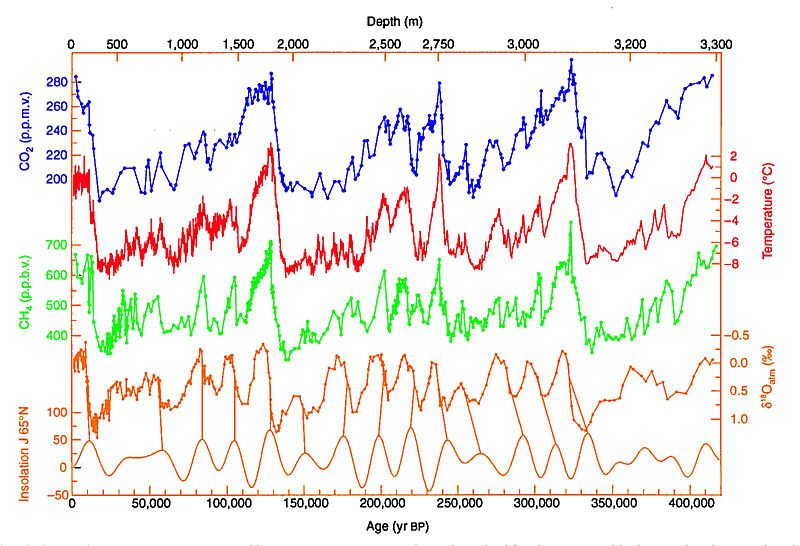In his Jul. 2, 2020 “Explainer: How the rise and fall of CO2 levels influenced the ice ages,” article, CarbonBrief’s Zeke Hausfather made quite clear that: “The global average temperature was around 4 [degrees] C cooler during the last ice age than it is today.”
What is it today? 1.2 degrees Celsius or C higher than what is considered at present to be normal; that being defined as zero degrees C – the so-called “temperature normalization reference line.” Which would put the Earth’s average temperature 20,000 years ago at -2.8 degrees C (that is, relative to what’s accepted today as the zero-degrees-C-reference level).

As if in response, the CarbonBrief contributor then went on to admonish: “There is a real risk that, if emissions continue to rise, the world warms more this century than it did between the middle of the last ice age 20,000 years ago and today.”
That’s no small thing and added: “The fact that relatively small changes in external forcings can drive such a large planetary response during ice ages should serve as a cautionary example. This is because human emissions of CO2 and other greenhouse gases push the Earth further out of the range of climate conditions that have characterised the past few million years.”
Expanding upon this, Hausfather provided additional perspective. He wrote: “A 2013 paper by Dr Jeremy Shakun of Boston College and colleagues examined a network of 80 climate proxy records around the world during the end of the last ice age. They found that while CO2 generally lagged temperatures in the southern hemisphere – consistent with Antarctic reconstructions – the same was not true for the rest of the world.
“Both the northern hemisphere and overall global temperatures actually lagged CO2; in other words, for the world as a whole, warming happened after atmospheric CO2 concentrations increased. The reasons for this are complex and are driven in part by changes in ocean currents as ice ages end.”
“Specifically, Shakun and colleagues argue that changes in [Earth’s] orbital cycles triggered initial melting of ice sheets in the northern hemisphere. This caused large amounts of freshwater to pour into the oceans as ice sheets melted, disrupting the Atlantic Meridional Overturning Circulation (AMOC), which, in turn, cooled the northern hemisphere and warmed the southern hemisphere.
“This southern hemisphere warming caused ocean releases of CO2, which, in turn, warmed the entire planet. Shakun et al suggest that the vast majority of the global warming at the end of the last ice age occurred after CO2 increased, though this warming was driven by a combination of albedo (reflectivity) changes and the greenhouse effect.”
Not the end of story
As much as is written above, this is certainly not the end of the story.
In fact, the CarbonBrief contributing writer had way more to say. He also introduced, well, this jaw-dropping declaration: “While there is a clear relationship between CO2 and temperature over the past million years, it is difficult to extrapolate to future changes to the Earth’s climate.”
Right he is! So, with this in mind plus other, relevant considerations, what one must ask oneself is: “What is the proper course of action to take on climate and climate change going forward? Do we want to take it upon ourselves to try to alter the climate to the point of facilitating world cooling, understanding that there exists the potential of running the risk of hitting negative-atmospheric-temperature-adjustment overshoot – in other words, causing precipitous global-temperature drop, sending it over the climatological cliff enough to trigger yet another ice-age event?
Could it happen? This is something that we should at least want to think about.
⁃ Alan Kandel
Copyrighted material.
Above and corresponding, connected home-page-featured images: Wikimedia Commons